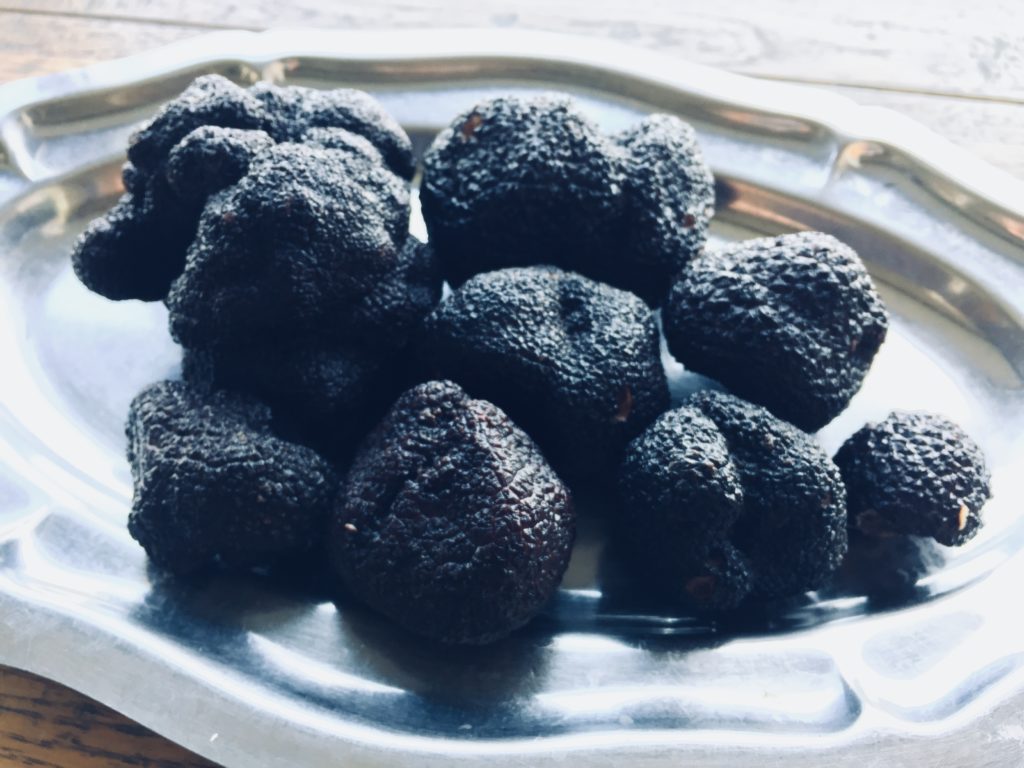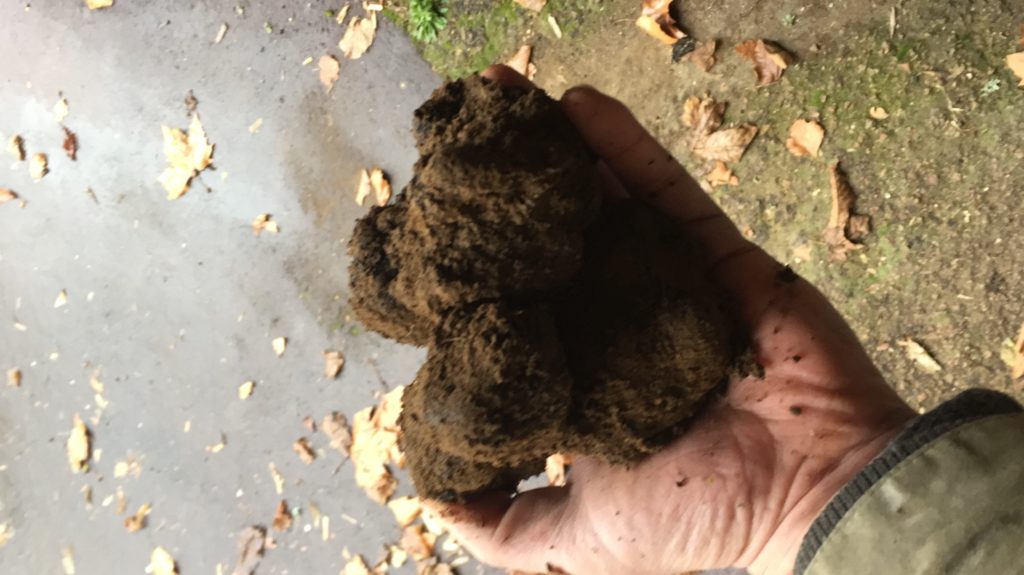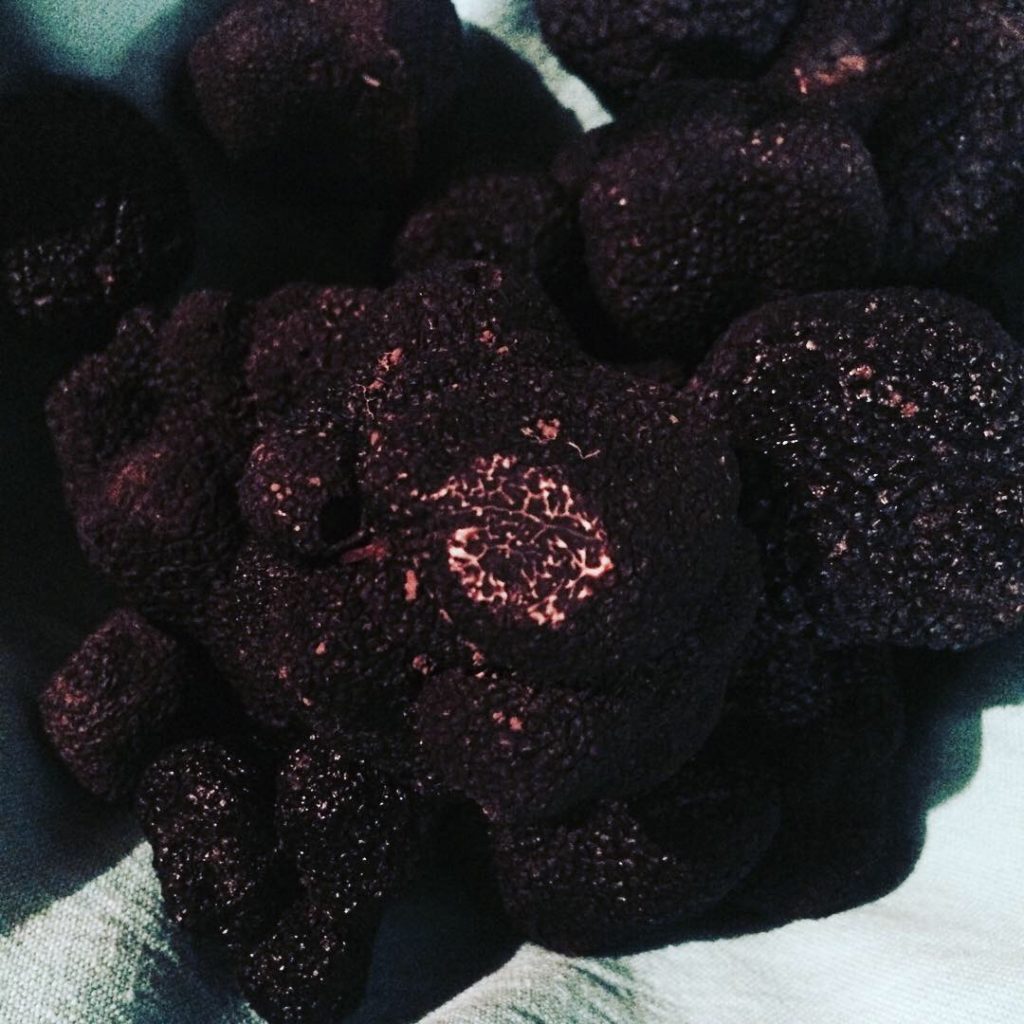Truffles: a story of passion and land!
All you want to know about the Black Truffle Perigord
“This fungus known for its aphrodisiac and healing properties is nicknamed “the daughter of lightning” by the Romans, who appreciate its flavor. It features prominently on Lucullus’ table and the famous Apicius provides some recipes. Considered by the Church as the “devil mushroom” specific to witches, it disappeared from medieval cookbooks only to reappear on the royal tables until the 14th century. “
Our truffle Farm is small but human. It is made up of truffle trees more or less old (the oldest approach to 40 years) but even the old trees still give! Our truffle factory was built on an old vine and gives us generously all the love we give it.
The truffle is certainly the most prized mushroom of gourmets, the rarest, the most expensive, but also the most mysterious. The word truffle comes from the vulgar Latin tufera, itself derived from the classic Latin tuber, growth, the truffle being literally an outgrowth from the earth. Thirty-two species of truffles have been recorded around the Mediterranean. Six of them have gastronomic qualities. Here are the three so-called gastronomic species found in Périgord:
1. TUBER MELANOSPORUM
Known as black truffle, or Périgord truffle. She’s the queen of truffles. unquestionably! Its reputation is worldwide. The name “Périgord Truffle” is a botanical appellation that does not guarantee the geographical origin of the product. It is mainly found in the south-east of France and in Périgord-Quercy, but also in Morocco, Spain, Italy, Croatia and Slovenia. It has a finely peppery taste, black radish and hazelnut with inimitable flavors, a mixture of musk and undergrowth, earth and humus, sublimated with roasted dried fruits. However, it should be noted that there are significant differences in aromas from one truffle to another, yet within the same species, due to the very high variability of their genome. It requires limestone soil and heat. It is most often in symbiosis with pubescent oak or green oak. Its maturity period runs from mid-November to the end of March, depending on weather conditions.
2. TUBER BRUMALE
Known as winter black truffle or musk truffle. It is characterized by its smell of nuanced rave of ethereal garlic, its taste of fermented fruits, very peppery, sometimes musky and a little sweet. It grows in the same areas as the tuber melanosporum, is harvested at the same time and can be confused with it. It is the only variety to be classified in the category of noble black truffles with The Melano, although its fragrance is less intense than the latter. As a result, it sells for one-third of the price of melanosporum. Rarely bigger than an egg, it is smaller in size than the truffle star.
3. TUBER AESTIVUM
Known as Mayenque truffle or summer white truffle, which the ancients called St. John’s truffle. Its maturity period is from the beginning of May to the end of September. This white-fleshed truffle has light and volatile aromas of roasted barley malt and undergrowth, much less dripping than Tuber melanosporum, but also five times cheaper… Nevertheless, it is appreciated for its nuanced flavors and subtle notes of hazelnut, especially by those who find that melanosporum has a perfume a little too musky …


